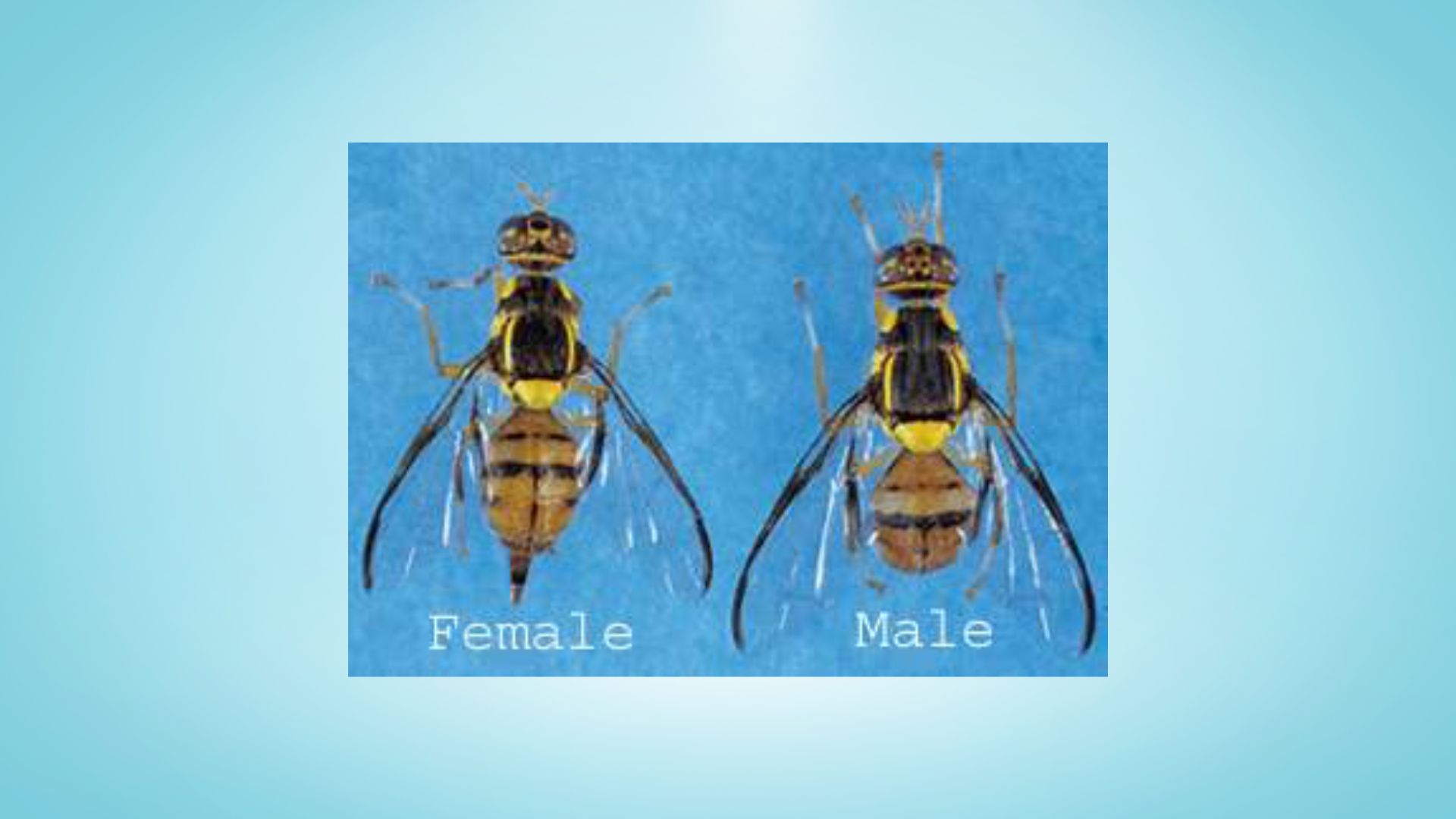

The State of California will take emergency action on Aug. 26 to eradicate the oriental fruit fly. Two of the insects were discovered in the City of Santa Clara earlier this month. The California Department of Food and Agriculture (CDFA) says that the insect is a “significant threat” to the natural environment, agriculture and economy of California.
Treatment will take place in parts of Santa Clara, Sunnyvale, Cupertino and San Jose. The CDFA warns that the treatment area could expand in the coming days. Authorities have detected several other potentially dangerous fruit flies in the same region near Santa Clara, Sunnyvale, Cupertino and San Jose and are in the process of confirming the findings.
CDFA will conduct its treatment over several weeks. The treatment will include bait high on street trees, utility poles and other surfaces within a roughly 1.5-mile radius of the spots where the flies were discovered. The bait contains a natural compound called methyl eugenol, which attracts the flies, and an organic pesticide known as spinosad, which kills them. The small splotches of bait are applied eight to 10 feet off the ground using a pressurized gun.
The oriental fruit fly poses a significant threat to California’s multibillion-dollar agricultural industry. It is native to Asia and has spread to multiple Pacific Islands, including Hawaii. It is known to infest more than 230 types of fruits and vegetables, including such valuable California crops as avocados, apples, stone and citrus fruits, tomatoes and peppers. The 2020 value of California crops threatened by the fruit fly was $19.3 billion, according to the CDFA.
“It would be disastrous for the oriental fruit fly to get established in Santa Clara County and California,” Deviney said. “We all need to be vigilant in protecting our agricultural and natural resources. Please do not bring or ship any fruits, vegetables or plants into California without ensuring they are permitted by law.”
The most common ways for the fruit fly to enter California are when people illegally bring fruits and vegetables back from their travels or receive packages of homegrown produce through the mail. County of Santa Clara Agricultural Commissioner Joe Deviney said it’s critical for county residents to follow federal and state laws governing what they are allowed to bring home when traveling.
Oriental fruit flies are larger than common houseflies. They lay eggs under the skin of host fruits. When the eggs hatch into larvae, they tunnel through the flesh of the fruit, making it unfit for human consumption.
Because the larvae can remain hidden within the fruit for up to 10 days, they can “hitchhike” into California undetected. That’s why it’s important for the public to remember not to pack any pests when traveling or mailing packages. Visit the Don’t Pack a Pest website for more information. If you come across produce that looks like it may be infested, or if you have any questions, contact the County of Santa Clara Division of Agriculture at scc.agriculture@cep.sccgov.org or (408) 918-4600.
Bay Area artist Nathan Oliveira (1928-2010) described himself as an abstract artist whose work had…
The California Highway Patrol's so-called "surge" operations in Oakland have netted nearly 400 arrests so…
James Williams wasn’t just Santa Clara’s first African American citizen and one of the first…
Can you spell deja vu? The battle over the best way to teach children how…
A new Sunnyvale rideshare shuttle will make it easier to get around the city’s Peery…
Former city council member and long-time active member of the Santa Clara community, Debi Davis, passed…
View Comments
I am not familiar with oriental fruit fly but it sounds bad. Did this invasive species come from China, India, or someplace else. Will the government close the boarders to those places until we stop the spread?